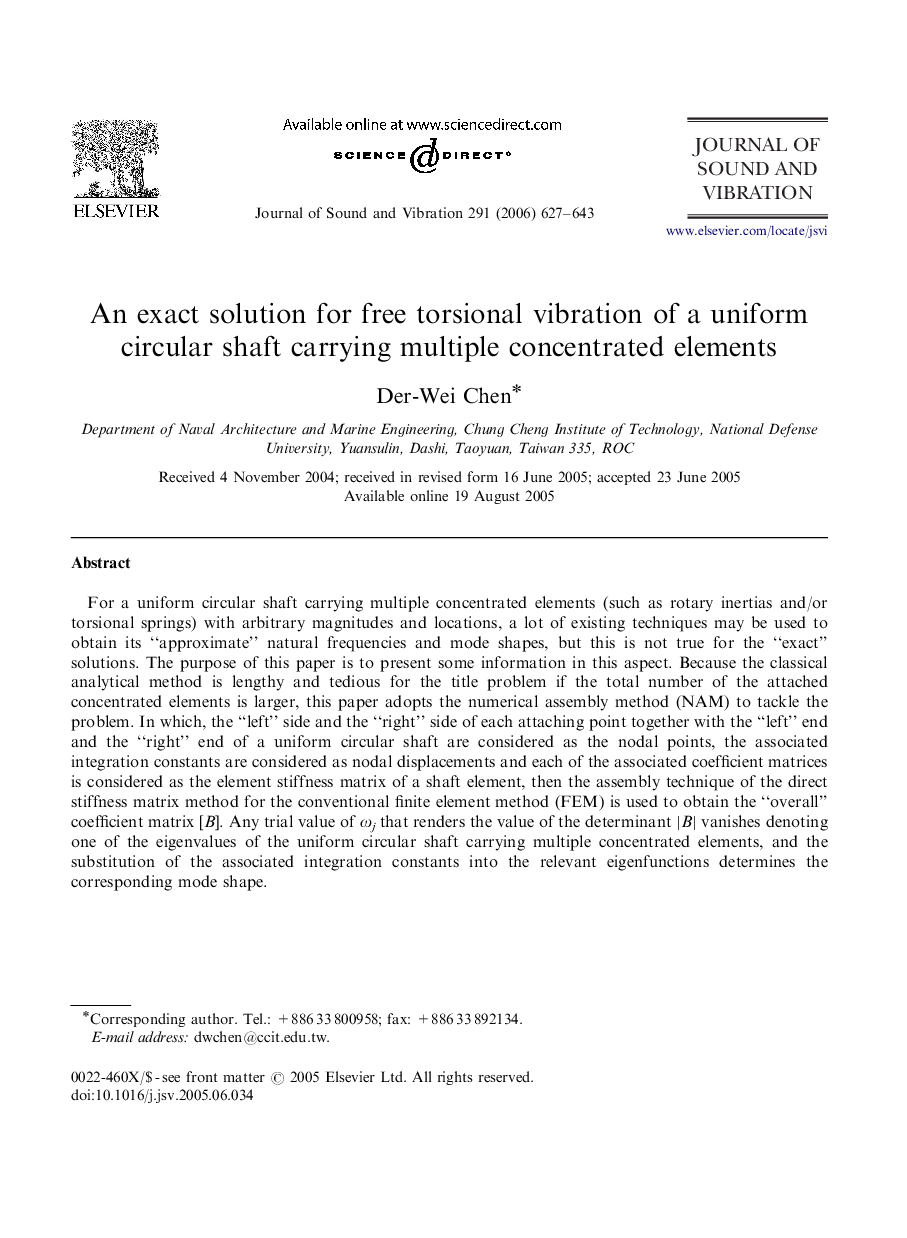| Article ID | Journal | Published Year | Pages | File Type |
|---|---|---|---|---|
| 291751 | Journal of Sound and Vibration | 2006 | 17 Pages |
For a uniform circular shaft carrying multiple concentrated elements (such as rotary inertias and/or torsional springs) with arbitrary magnitudes and locations, a lot of existing techniques may be used to obtain its “approximate” natural frequencies and mode shapes, but this is not true for the “exact” solutions. The purpose of this paper is to present some information in this aspect. Because the classical analytical method is lengthy and tedious for the title problem if the total number of the attached concentrated elements is larger, this paper adopts the numerical assembly method (NAM) to tackle the problem. In which, the “left” side and the “right” side of each attaching point together with the “left” end and the “right” end of a uniform circular shaft are considered as the nodal points, the associated integration constants are considered as nodal displacements and each of the associated coefficient matrices is considered as the element stiffness matrix of a shaft element, then the assembly technique of the direct stiffness matrix method for the conventional finite element method (FEM) is used to obtain the “overall” coefficient matrix [B]. Any trial value of ωj that renders the value of the determinant ∣B∣ vanishes denoting one of the eigenvalues of the uniform circular shaft carrying multiple concentrated elements, and the substitution of the associated integration constants into the relevant eigenfunctions determines the corresponding mode shape.To confirm the reliability of the presented algorithm, all the numerical results obtained from the NAM were compared with the corresponding ones obtained from the published literature or the FEM and good agreement was achieved.
